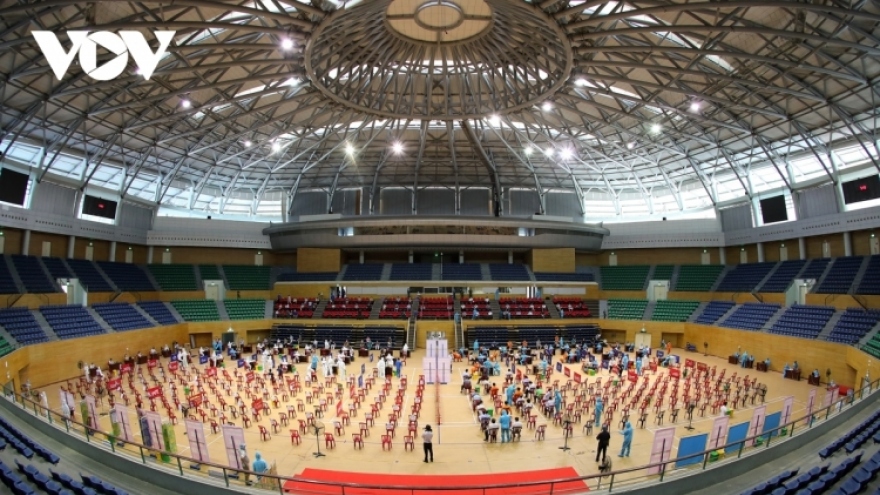Vietnam limits social distancing, boosts testing in at-risk areas
VOV.VN - Vietnam has adopted a fresh COVID-19 prevention and control strategy, with a primary focus on enforcing limited social distancing and conducting COVID-19 testing in high-risk areas.

According to the Ministry of Health, as many as 23 cities and provinces nationwide have so far implemented social distancing measures, bringing about certain results, including halting the spread of the virus among the community.
Despite this initial results, Minister Nguyen Thanh Long says the implementation of extended social distancing measures and the extensive testing campaign has had exerted a negative impact on business production and the lives of local residents.
In order to cushion its impact, Minister Long has suggested limiting social distancing in small spaces and conducting COVID-19 testing in at-risk areas to further control outbreaks within the course of 14 days.
Assoc. Prof. and Dr. Nguyen Huy Nga, former director of the Preventive Medicine Department, says the latest strategy can be viewed as appropriate given the current context.
“The virus has already spread to the wider community as opposed to entering from abroad. In addition, the vaccination rate is increasing considerably, especially in big cities like Hanoi, Ho Chi Minh City and some other COVID-19 hotspots in southern Vietnam. Therefore, extensive social distancing is not necessary as it has negatively affected the national economy and people’s life,” Dr. Nga explains.

According to the health professional, “We need to start living with the virus, considering it part of our life. We need to shift our strategy from extensive to limited social distancing, and have to gradually accept it.”
Nga therefore supports enforcing social distancing in specific places, as opposed to a larger area like a commune or a district when an infection case is detected. Thereby COVID-19 testing can only be conducted in small areas in order to swiftly detect and separate possible infection cases from the wider community.
He also supports conducting COVID-19 testing in at-risk and high-risk areas categorised by the Ministry of Health, as opposed to extensive testing as carried out recently, which is very costly and lacks efficiency.
“Depending on the local health situation, we can offer a reasonable and effective form of testing,” says Dr. Nga.
In his opinion, these steps suit the actual situation and contribute to saving resources, particularly in terms of manpower, budget, and medical equipment.
Furthermore, he suggests that home quarantine for F0 cases, as it is being done in Ho Chi Minh City and several southern localities, should be replicated to other localities nationwide, including Hanoi.
“Home quarantine is not too costly, and F0 cases and their relatives themselves are aware of COVID-19 prevention and control measures,” Dr. Nga states.
He also suggests that every healthy individual should be fully vaccinated against COVID-19 and should continue to strictly follow COVID-19 guidelines set out by the Ministry of Health in order to better protect themselves from virus infection.
Vietnam is currently battling against a recurrence of the SARS-CoV-2 virus, which has since late April spread to 62 out of 63 cities and provinces across the country. Nearly 700,000 infections have now been detected nationwide, with half of them recorded in Ho Chi Minh City, the country’s largest COVID-19 hotspot.

